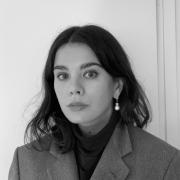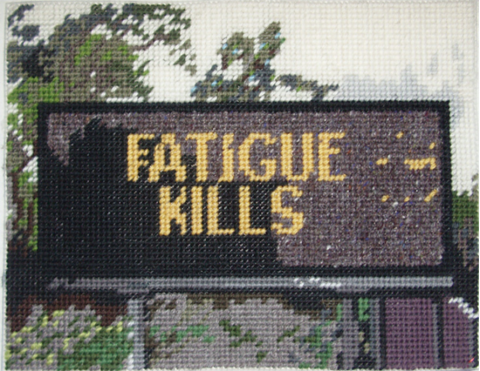A Chorus That Spans Generations
Ever since I was a child I have found ruins compelling: a tangible manifestation of time passed, something that can affect the body situated in the present. Travelling to both the Old City in Acre, and Masada however, it was not the physical structures, stretching to the sky that struck me. At Acre port, you can see at tidal level, strange geometric weed and rock formations: look down from a higher vantage point and it is clear that what lies below are the foundations of some far more ancient other structure. Co-opted by creatures of the sea bed, seemingly subsumed by time, stubborn traces remain- refusing to deteriorate they begin to form something new. Gazing out from the tallest peak of Masada, it is not the vestiges of this resplendent palace that haunt me but the lingering foundations of some other unknown building tracing craggy labyrinths beneath.
Lattice–work stretches across the floor, creating a web of longitude and latitude mapping out time, upon space. Anchored by a prime meridian. These markers ground us within an undulating and uncertain environment.
Recordings of ancient events unravel into a cryptic iconography, a primordial mark–making that over the years acquires new possible meanings, contexts and connotations. Step into a museum and peer at an Ancient Canaanite scrawl: we do not see a juridical text, a portent of a plague or a recording of one’s possessions but an inscrutable geometric reiteration spilling across the tablet like the unfolding chains of DNA.
Over time we may unlearn certain motifs, but something of their inherent order remains sensible to us as they mimic patterns within ourselves. A cellular alteration within the body: a code that copies itself, doubling and doubling to create a new and unstoppable rhythm, a network which rapidly unfolds. Minute writhing entities jostle with one another, obliterating some neighbors, they converge with others. These phenomena are pregnant with possible, at times miraculous outcomes, alien processes give birth to new alien things. Molecules of sandy clay join mineral elements, threads of yarn fuse together: inseparable, they undergo a change that hurtles towards a startling transformation. Perpetually evolving towards decay and an utter erasure. The tread of feet reduces the structure to dust.
Sediment migrates across space, clustering and stagnating. Over years, it lithifies, expelling fluid, becoming compact under immense pressure until it has formed solid rock. This process eventuates as bedrock. Within it resides a host of organisms and creatures, petrified, they are known to us as fossils. Excavate the earth to find layers of clay, fiber and minerals build up over time to create a tangible manifestation of time, with ripples and caves and fissures and markers, Bedrock acts as a living, unfolding near linear chronology. Mosaics seem like inverted excavations. Materials from different times and places broken down, fragmented accumulated and reconfigured into a strange new thing. Time and place converges and is also confounded. Mistakes are made, the maker treads backwards, forwards but also to the side and then is still again.
The Arts and Crafts movement created a vernacular built from the natural world: of folk lore, and askew motifs, that echoed throughout the latter half of the 19th Century. A longing for the visible hand, an object one can own to be closer to another life, an object born from painstaking labor over a magnitude of time. This longing was born from a need to protest the terrors and dichotomies of the a relentlessly industrializing society. I am haunted by visions of parched lips inhaling cotton dust, dust which trespasses the body and amasses in the lungs. I am haunted by visions of George Eliot’s Silas Marner, a hermetic weaver whose skeleton formed in response to the movements of his trade. The cycle of the spine arched over a loom, eyes peering at thousands of stiches in the dim light, knuckles heaving.
The sky wheels above us. Sounding it out. Feeling Our way. We drive in perpetual circles to circumnavigate this endless body.
It unfolds ponderously: at walking pace. This is a return to a kind of bodily time, this temporality steadies the tremulous pulse, the heaving breath slows. Accumulated action becomes a form of nonlinear timekeeping, hands dance a spidery minuet: a human metronome.
The Ancient Greeks built a notion of time that sat outside of the reach of linear time. It was referred to as Kairos- and could refer to a critical or opportune moment, or to things all happening at once with an unfurling agency. The term was traced to discourses discussing both archery and weaving. In archery, Kairos refers to the instance an arrow might be fired in order to successfully penetrate an object. In the realm of weaving, Kairos refers to the favourable moment in which the shuttle could be passed through threads on a loom. This notion remained integral throughout the Greek Empire, conceiving of the notion as a way of adapting to and embracing the flux of contingent circumstances.
The surface of glazed clay, silky like chocolate, is frosted with a fine layer of traces of skin cells. The surface retains an imprint, the past refuses to leave us entirely: We leave traces of ourselves embedded in all that we do. Sensory memory: remembrance built upon the touch of skin, the curve of palms, the whispering of fingers. Hands follow the same learned movements as those that came before: a chorus to span generations. Reaching into the deep past, these echoed actions create temporal collisions as new explorations meet with those bygone.
My great uncle used to carve wood- he would make gifts for us: tiny wooden boxes, shaped like pears or little arches: the wood whittled down with startling tenderness. We never kept anything in these boxes. I was young when he passed away, I used to hold them and trace my fingers over the grain of the wood as if I might learn of something, like the wood itself might yield some unknown knowledge. Years ago, I could lift them and inhale the spiced aroma of cedar. On the winds of this scent I could remember with startling clarity wandering with him through the woods of Chesham, leaves trodden into a fragrant mossy pulp beneath our feet. On the underside of each box, he would etch the year the box was made, and the wood that it came from. Objects can act as strange time keepers in ways that a clock never could, they hold a sensory power over us that might plunge us into another time, bringing us closer to those who have gone.

_1-itok=qzarDh_q.jpg)

.jpg)
.jpg)

